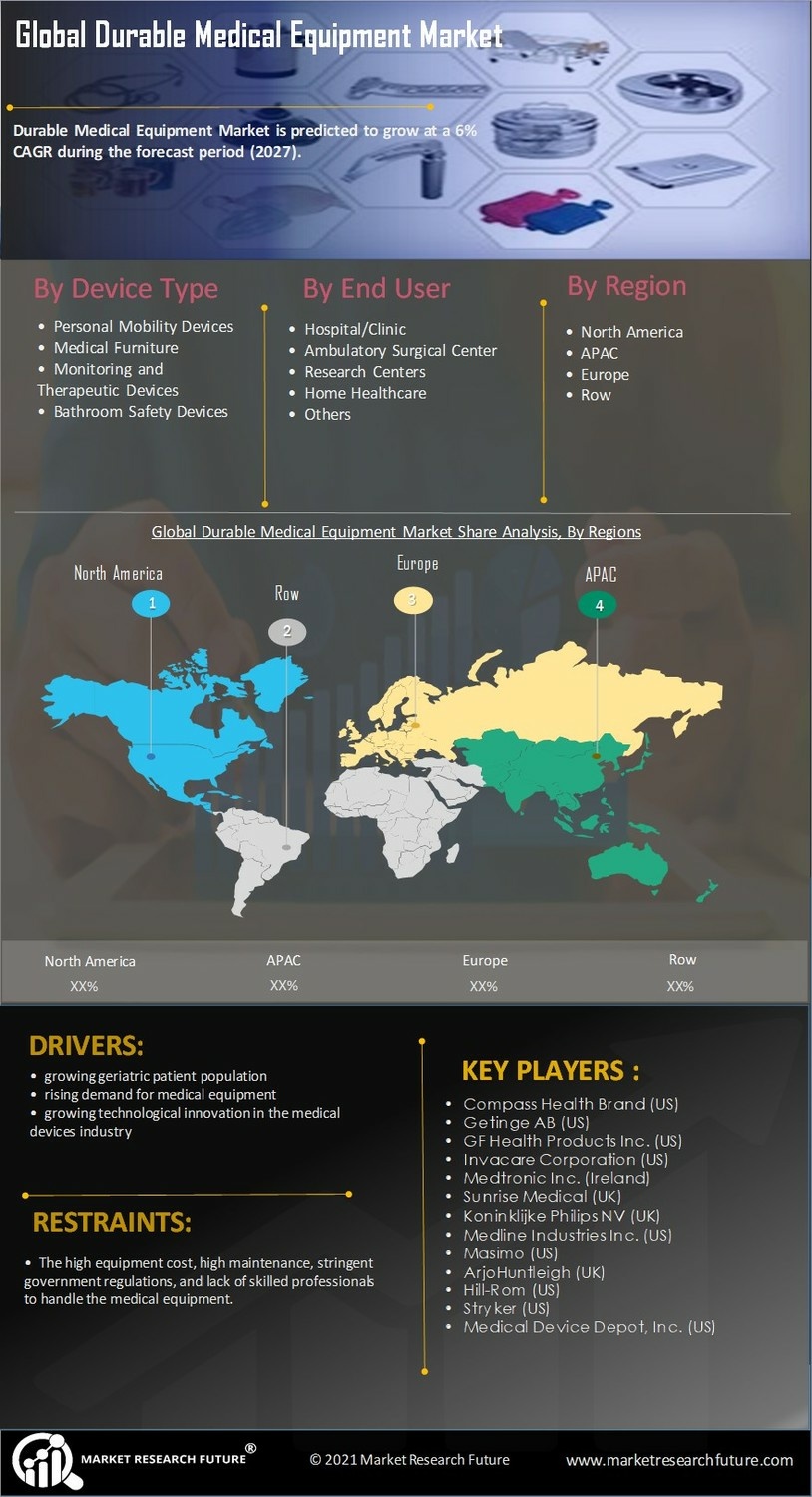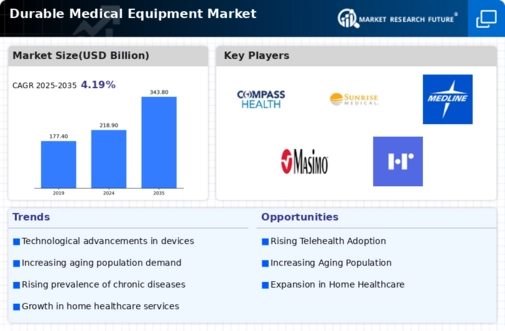Aging Population
The aging population is a primary driver of the Durable Medical Equipment Market. As individuals age, they often experience a decline in health, necessitating the use of various medical devices to maintain their quality of life. It is estimated that by 2030, the number of people aged 65 and older will reach approximately 1.4 billion, significantly increasing the demand for durable medical equipment. This demographic shift is likely to lead to a surge in the need for mobility aids, respiratory devices, and other essential equipment. Consequently, manufacturers in the Durable Medical Equipment Market are focusing on developing innovative solutions tailored to the needs of older adults, thereby enhancing their market presence and competitiveness.
Rising Chronic Diseases
The prevalence of chronic diseases is another critical factor influencing the Durable Medical Equipment Market. Conditions such as diabetes, cardiovascular diseases, and respiratory disorders are on the rise, leading to an increased demand for medical equipment that aids in the management and treatment of these ailments. According to recent data, chronic diseases account for approximately 70% of all deaths worldwide, underscoring the urgent need for effective medical interventions. This trend compels healthcare providers to invest in durable medical equipment that can facilitate better patient outcomes. As a result, the Durable Medical Equipment Market is witnessing a shift towards more advanced and user-friendly devices that cater to the needs of patients with chronic conditions.
Technological Innovations
Technological innovations play a pivotal role in shaping the Durable Medical Equipment Market. The integration of advanced technologies such as artificial intelligence, telemedicine, and smart devices is revolutionizing the way medical equipment is designed and utilized. For instance, the introduction of connected devices allows for real-time monitoring of patients, enhancing the efficiency of healthcare delivery. Furthermore, the market for smart home healthcare solutions is projected to grow significantly, driven by the increasing demand for remote patient monitoring. This technological evolution not only improves patient care but also creates new opportunities for manufacturers within the Durable Medical Equipment Market to differentiate their products and enhance their competitive edge.
Increased Healthcare Expenditure
Increased healthcare expenditure is a significant driver of the Durable Medical Equipment Market. Governments and private sectors are investing more in healthcare infrastructure, which includes the procurement of durable medical equipment. This trend is particularly evident in emerging economies, where rising disposable incomes and a growing middle class are leading to higher healthcare spending. According to estimates, global healthcare expenditure is expected to reach over 10 trillion by 2025, creating a favorable environment for the growth of the Durable Medical Equipment Market. As healthcare systems expand and modernize, the demand for innovative and high-quality medical devices is likely to rise, further propelling market growth.
Regulatory Support and Reimbursement Policies
Regulatory support and favorable reimbursement policies are essential drivers of the Durable Medical Equipment Market. Governments are increasingly recognizing the importance of durable medical equipment in improving patient outcomes and are implementing policies that facilitate access to these devices. Enhanced reimbursement frameworks encourage healthcare providers to adopt advanced medical equipment, thereby stimulating market growth. For instance, many countries have established reimbursement programs that cover a wide range of durable medical equipment, making it more accessible to patients. This supportive regulatory environment not only boosts the confidence of manufacturers but also fosters innovation within the Durable Medical Equipment Market, as companies strive to meet evolving regulatory standards and patient needs.


















Leave a Comment